 USS Yorktown NCC-05 'Question with boldness, even the existence of God'
USS Yorktown NCC-05 'Question with boldness, even the existence of God'
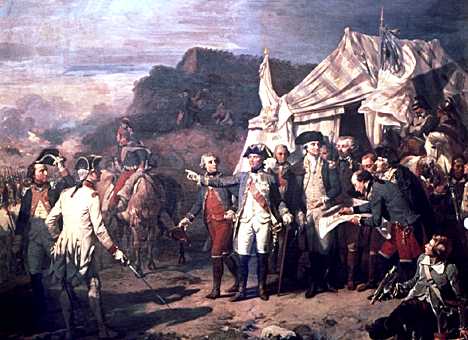 <
<
The American Revolution made the name Yorktown famous. Yorktown, a small town in Virginia on Earth's North American Continent, was the site of the final battle that won the United States it's independence from Great Britain. The US Army under General George Washington along with their allies, the French Army under General Jean Baptiste de Vimeur, Comte de Rochambeau and the Marquis de Lafayette
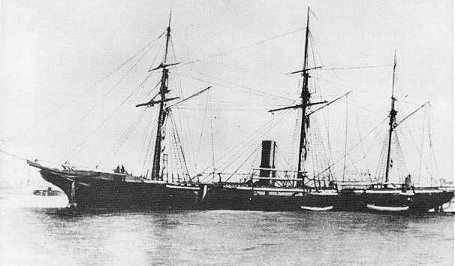
The first ship named Yorktown was a US Navy Sloop of War built in 1838. She was 117 feet long and 34 feet wide. Armed with sixteen 32 pound guns, she was very well armed for her time. The Yorktown served in the Pacific Ocean for ten years before being mothballed. Two years later, she was recommissioned and sent to the coast of Africa to hunt down illegal slave ships. She returned home to Boston and was again mothballed. However she was again recommissioned and sent to stop illicit slave traffic, but she hit an uncharted reef off the Isle de Mayo in the Cape Verde Islands on 6 September 1850 and sank.
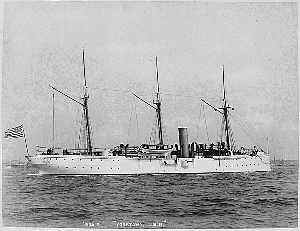
The second ship to carry on the name Yorktown was a steel hulled, twin-screw gunboat. She was commissioned on 23 April 1889. She was 244 feet long and 36 feet wide, while displacing 1,910 tons. Her armament included six 6-inch breech-loading rifles, two 6 pound guns, two 3 pound rapid fire guns, two 37-mm Hotchkiss revolving cannons and two Gatling guns. This Yorktown spent her first 4 years in the Mediterranean Sea, Gulf of Mexico, and Pacific Ocean. She also sailed to the Bearing Sea to protect Seals from poachers. In 1893 she returned to the East Coast of the United States for repairs. Then, she returned to the Pacific where she remained until Earth's first World War. In 1918 she headed for the Atlantic Ocean for convoy duty. She was decommissioned on 12, June 1919 and sold for scrap in 1921.
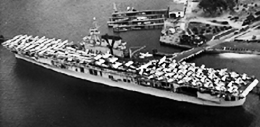
The third USS Yorktown was the fifth Aircraft Carrier in the United States Navy. CV-5 was the first of her class. The Yorktown class was started in 1933 and would consist of three ships. The Yorktown (CV5), Enterprise (CV6), and Hornet (CV8). This Yorktown was commissioned by Mrs. Eleanor Roosevelt, wife of then US President Franklin D. Roosevelt, on 30 September 1937. The ship was at Norfolk Virginia on 7 December 1941, when the Japanese attacked the US Naval Battleship Fleet at Pearl Harbor, HI. She departed for the Pacific on the 16th and became the Flagship of Rear Admiral Frank Jack Fletcher and his Task Force 17. In late January 1942, the Yorktown and Enterprise conducted the first US offensive operations of the war by attacking Japanese bases in the Gilbert and Marshall Islands.

The Yorktown's first enemy kill was a 4-engine 'Mavis' patrol bomber during the action. In late April 1942, Task Force 17 joined Task Force 11, built around the carrier USS Lexington for the Battle of the Coral Sea. This was the first battle where opposing ships never saw sight of each other. During the battle, a member of the Yorktown's Fighter Squadron, Jimmy Flatly, stood out as an ace pilot. Planes from Yorktown and Lexington sunk the Japanese light carrier Shoho and heavily damaged the larger carrier Shokaku, but at a loss.
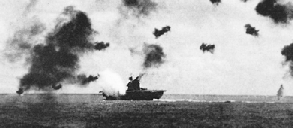
The USS Lexington was also sunk and the Yorktown damaged. She returned to Pearl Harbor for repairs but was underway again 72 hours later. She joined Task Force 16 built around her sister ships Enterprise and Hornet for the epic Battle of Midway. During this turning point in World War II, the three US Carriers sunk four Japanese carriers, one cruiser, and heavily damaged another cruiser. However the Yorktown was also lost during the fighting.
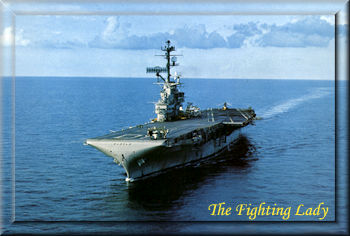
The fourth USS Yorktown was an Aircraft Carrier like her predecessor. CV-10 was an Essex class ship, commissioned 13 April 1943. She was 890 feet long and 196 feet wide. Also like CV-5, Mrs. Eleanor Roosevelt presided over the commissioning ceremonies. CV-10 started life with the name Bon Homme Richard, but was renamed Yorktown before building was completed to honor CV-5 lost a few months before at the Battle of Midway. The ship also shared two more things with CV-5. Her first Air Group Commander was Commander Jimmy Flatley, formerly aboard CV-5. Also, her first Commanding Officer was Captain 'Jacko' Clark, who was XO of the CV-5. Designed to carry 90 planes into battle, the ship would see several refits and improvements in her nearly thirty years of service. The Yorktown saw her first action in World War II by attacking the Japanese installations on Marcus Island in the Pacific. She was the first of the brand new Essex Class to see combat. CV-10 was also an actor! The ship and her crew stared in the 1944 war documentary 'The Fighting Lady', which became the ship's knick-name, and won an Academy Award.
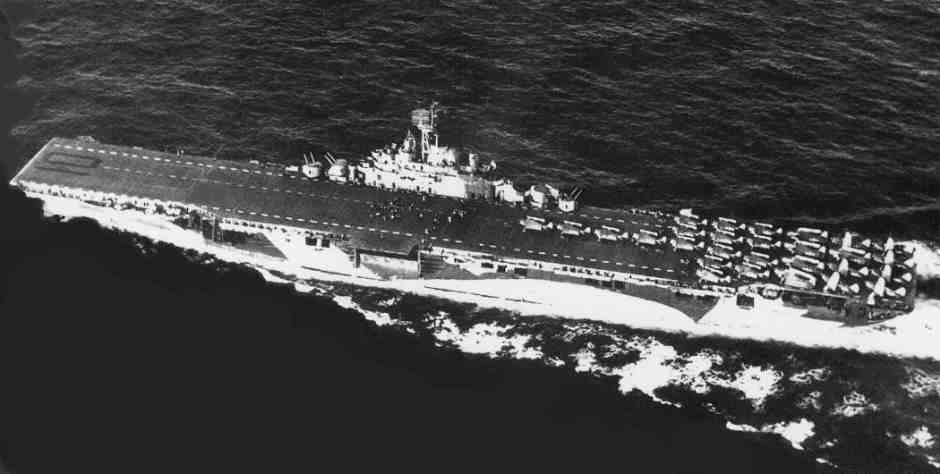
Throughout the war, the Yorktown would team with a ship she would share so much history with, the USS Enterprise. Both ships were members of Task Force 38/58 (TF38 when Admiral Halsey was in command, TF58 when Admiral Mitcher was commanding). The ship was involved in many of major Pacific Naval battles from 1943 thru 1945 when the war ended. In 1953, the ship was refit with improved radar and a new 'Island' superstructure. Other improvement allowed the ship to carry and operate jets from her deck. She was reclassified as an Attack Carrier, CVA-10. In 1955, the ship again entered dry-dock to undergo another major refit. This time the refit would allow the ship to launch and recover planes at the same time.
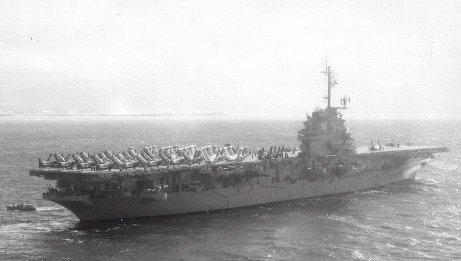
Also during the refit, the ship was again reclassified, but this time as an anti-submarine carrier, CVS-10. This meant the ship would be directly responsible for hunting and countering the Soviet Union's submarine superiority over the United States. From 1965 to 1966, the USS Yorktown was again in combat. She was sent into the Gulf of Tonkin off the coast of Vietnam. She launched strikes against communist targets while patrolling the coast. In 1969, the Yorktown returned home for the last time. She was decommissioned that year, after earning fifteen battle stars, The Presidential Unit Citation as well as many other awards, and staring in three movies. In 1970, the ship was towed to Charleston, South Carolina and became the first ship that was part of the Patriot's Point Naval and Maritime Museum. In the next few years, other ships would be added to Patriot's Point. The Destroyer USS Laffey, that also served along side the Yorktown during World War II, the Submarine USS Clamagor, and eventually more ships would be added. The ship is still a museum and open to the public.
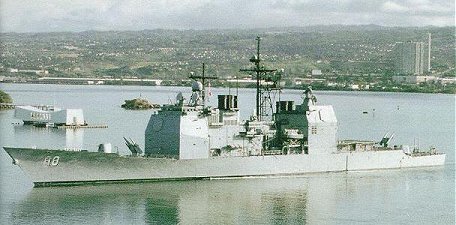
The fifth ship to bear the name Yorktown was a guided missile Cruiser of the Ticonderoga class. CG-48 was 566 feet long and 55 feet wide. She carried the AEGIS Combat System, the most advanced of the time. She was commissioned 4 July 1984. CG48 spent most of her career serving out of Pascagoula, Mississippi. During the 'Gulf War' in Earth's Middle East in 1991, the Yorktown protected the Battleship USS Missouri (BB63) and Aircraft Carrier USS Enterprise (CVN65). In 2002, the ship was refit with newer engines that gave her 15% more speed and her electronics suite was updated. In 2003 the ship moved to her new home port of Norfolk Virginia where she served out the rest of her career. Also in 2003, the ship was involved in the liberation of Iraq. In 2010 she was decommissioned. She was towed to Charleston South Carolina and became the newest addition of the Patriot's Point Naval and Maritime Museum, joining her previous name sake, CV-10. They are still there today and open to the public.
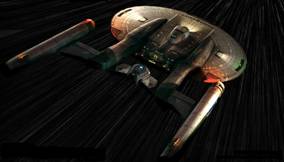
The sixth ship, and first starship to carry the name Yorktown is the NX-05, an NX class (some refer to the class as Enterprise class) Exploratory Cruiser. Captain Rod Berry, first Captain of the Yorktown and Lieutenant Marjel, Exobiologist were killed in a freak explosion of the shuttle pod they were on while making their final approach to the Yorktown which was still in space dock. The Yorktown started its shakedown mission on 24 March 2152. The newly promoted Captain, L. Horatio Hawke was named as Commanding Officer.
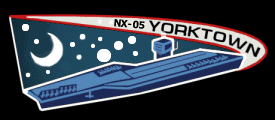
You can read about the recent History of the current 'Fighting Lady' by clicking on the menu item for our Public Archive.